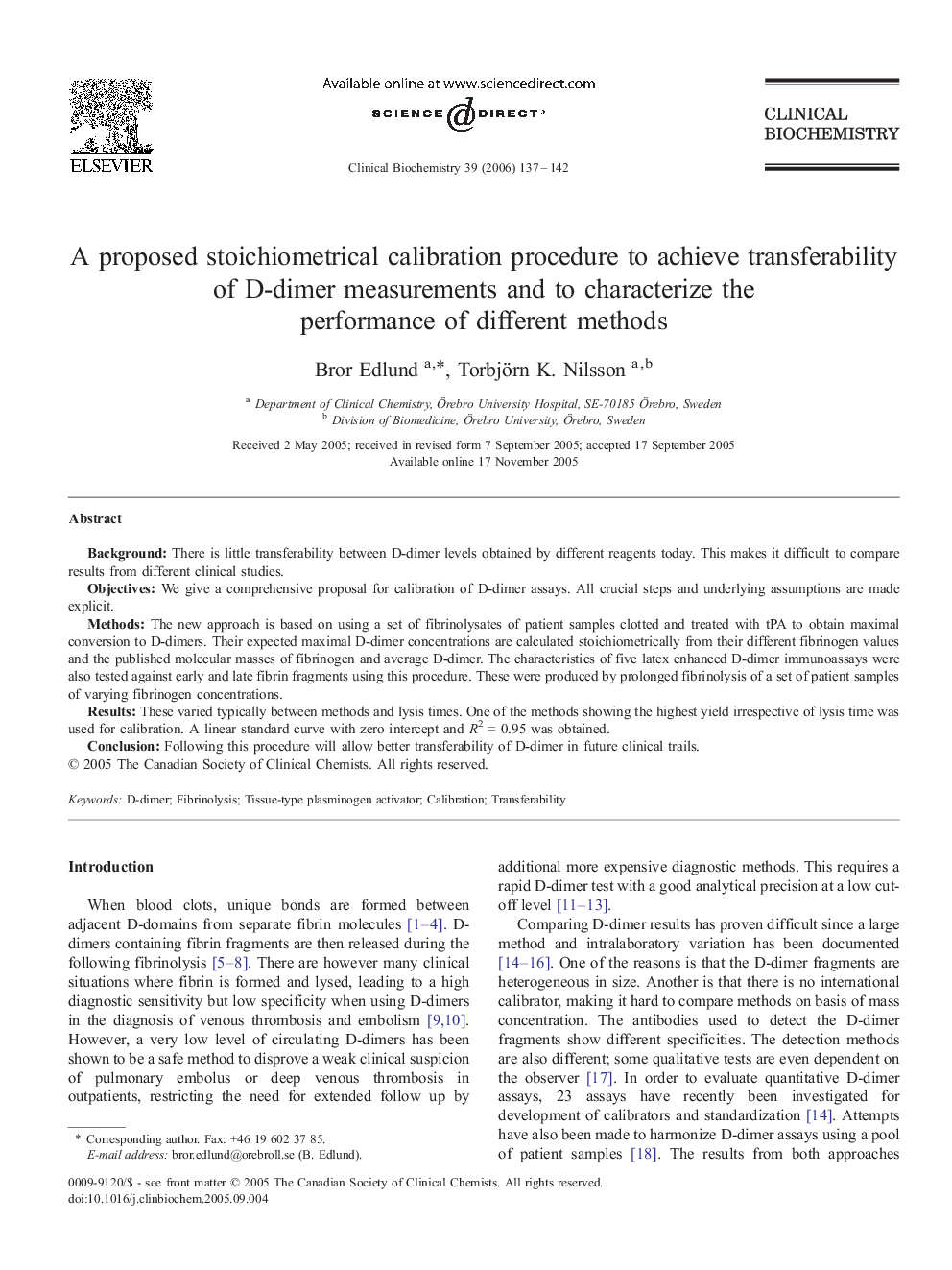| Article ID | Journal | Published Year | Pages | File Type |
|---|---|---|---|---|
| 1970666 | Clinical Biochemistry | 2006 | 6 Pages |
Background:There is little transferability between D-dimer levels obtained by different reagents today. This makes it difficult to compare results from different clinical studies.Objectives:We give a comprehensive proposal for calibration of D-dimer assays. All crucial steps and underlying assumptions are made explicit.Methods:The new approach is based on using a set of fibrinolysates of patient samples clotted and treated with tPA to obtain maximal conversion to D-dimers. Their expected maximal D-dimer concentrations are calculated stoichiometrically from their different fibrinogen values and the published molecular masses of fibrinogen and average D-dimer. The characteristics of five latex enhanced D-dimer immunoassays were also tested against early and late fibrin fragments using this procedure. These were produced by prolonged fibrinolysis of a set of patient samples of varying fibrinogen concentrations.Results:These varied typically between methods and lysis times. One of the methods showing the highest yield irrespective of lysis time was used for calibration. A linear standard curve with zero intercept and R2 = 0.95 was obtained.Conclusion:Following this procedure will allow better transferability of D-dimer in future clinical trails.
